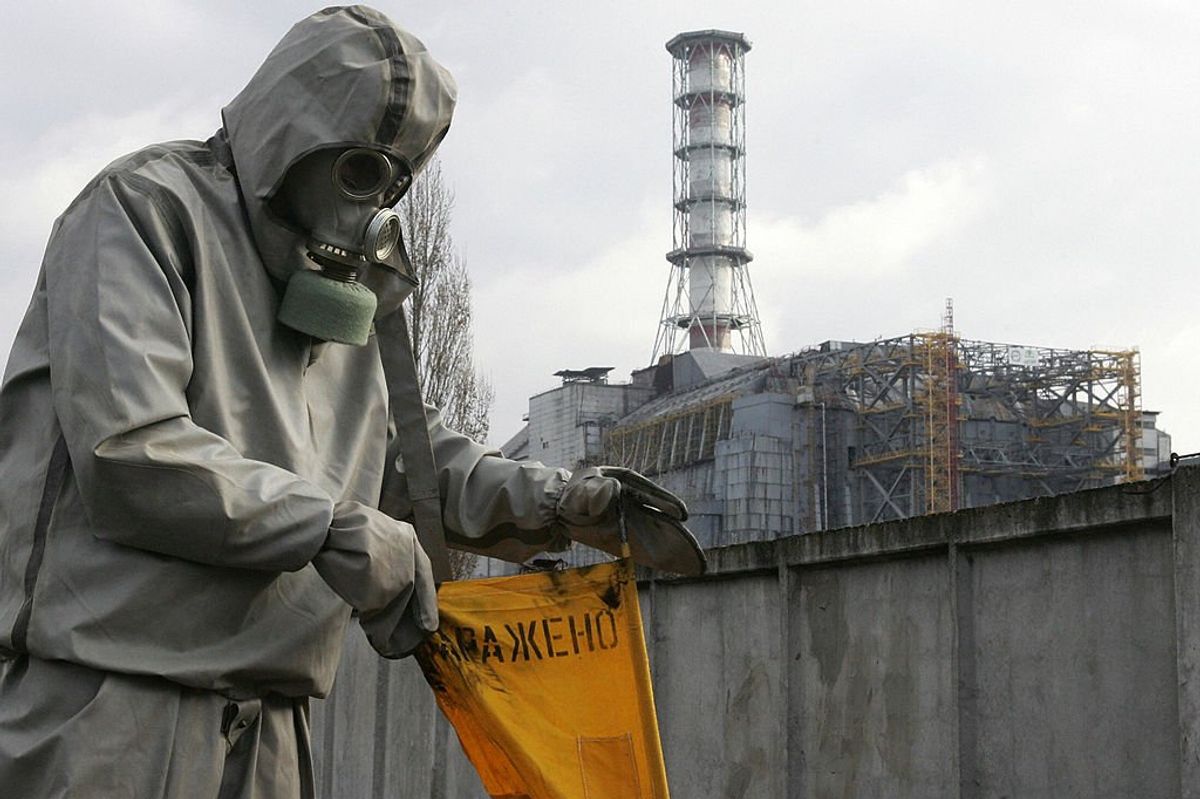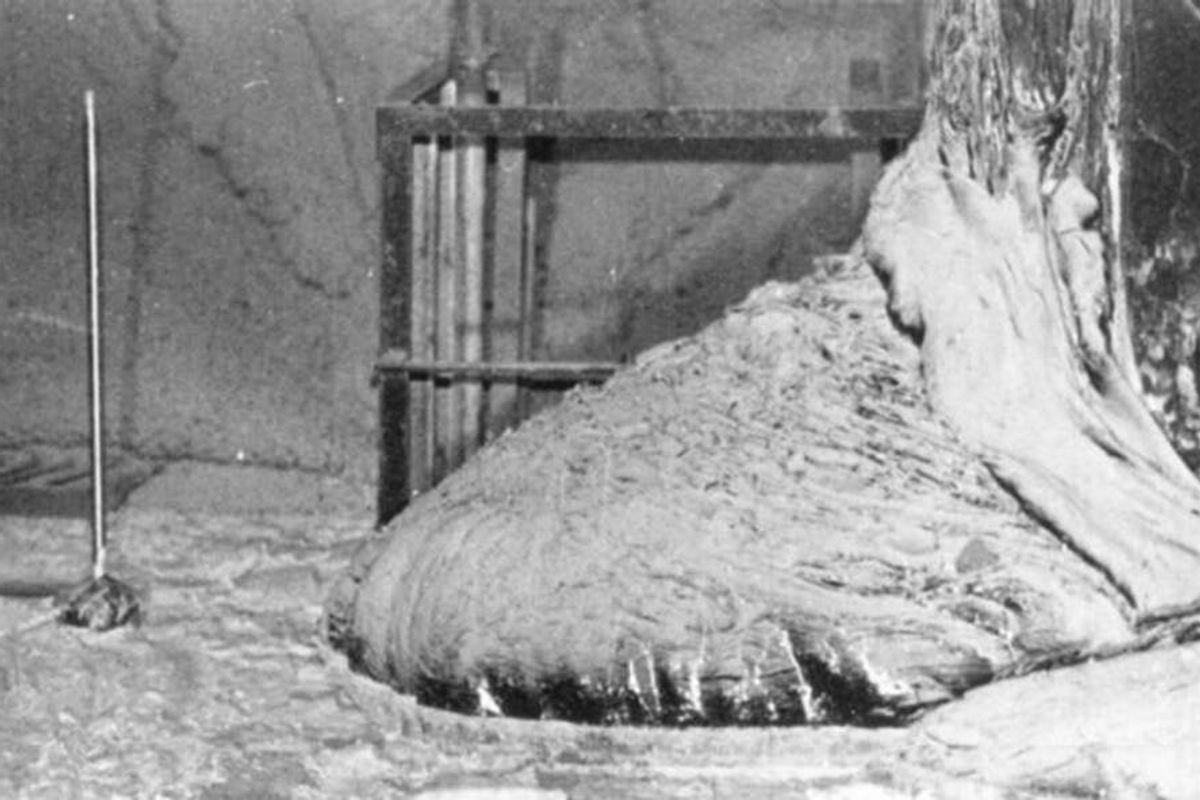Science & Tech
Harriet Brewis
Dec 07, 2025
Should You Be Scared - Will Chernobyl Really Kill You?
Backyard Media - INSH / VideoElephant
In April 1986, the world suffered its worst nuclear disaster to date when a reactor at the Chernobyl power plant in Ukraine, exploded.
The eruption was so severe that toxic levels of radioactive material spewed out of the plant for 10 days, with more than 50 tons of the stuff carried through the air across Europe.
Two Chernobyl plant workers died on the night of the meltdown, and a further 28 people succumbed to acute radiation syndrome within a few weeks.
At least thousands more are suspected to have died as an indirect result of the tragedy – with 5,000 contracting thyroid cancer – over the years that followed.
And yet, whilst the dangers of the disaster are now well documented, people were largely ignorant at the time of just how high the risks were.

Eight months after the fateful blast, investigators braved the Chernobyl site and entered the Number 4 reactor at the heart of the cataclysmic event.
There, they discovered something strange and ominous: a black, searing hot, lava-like substance which had burned through the facility’s basement where it had then solidified.
The hardened mass was christened the “Elephant’s Foot” for its shape and colour, but the name did nothing to communicate just how lethal this blob was.
This stony cocktail of sand, melted concrete, and uranium – known as corium – is said to be the most dangerous material on Earth, and has only formed naturally five times in history, Unilad reports.
Resurfaced video footage, which has recently been circulating on social media, shows a group of painfully misguided men in Hazmat suits within touching distance of the “foot”.
These investigators – or liquidators as they were called at the time – managed to document and study it, but paid a heavy price.
One team built a crude wheeled camera to take photos of the mass from a safe distance, but earlier photographs, and the aforementioned video, show workers getting dangerously close.
Artur Korneyev, a radiation specialist, was among them. He and his team were tasked with locating the fuel left inside the reactor and determining its levels of radiation.
“Sometimes we’d use a shovel,” he told the New York Times back in 2014. “Sometimes we’d use our boots and just kick [pieces of radioactive rubble] aside.”
And despite carrying out his investigations 10 years after the incident, Korneyev still suffered from cataracts and other illnesses following his exposure to the “Elephant’s Foot”, All That’s Interesting (ATI) reports.
When it was first measured, the several-foot-wide blob of chemicals released nearly 10,000 roentgens per hour. For context, just 50 -100 roentgens are enough to cause radiation sickness in a person.
Thirty seconds of exposure would have caused dizziness and fatigue, while two minutes of exposure would cause the cells in your body to haemorrhage, according to science publication Nautilus.
And just five minutes in the “Foot’s” presence would kill you within two days.

Despite almost 40 years having passed since the nuclear cataclysm, the mass remains highly radioactive, meaning it still poses a threat to anyone in its vicinity.
Therefore, in a bid to further study corium without risking their health, researchers are trying to replicate small amounts of the Elephant’s Foot chemical composition in the lab.
In 2020, a team at the University of Sheffield successfully developed a mini version of the blob using depleted uranium – a variation on natural uranium which is about 40 per cent less radioactive and is commonly used to produce tank armour and bullets, ATI notes.
Nevertheless, researchers acknowledge that because the replica is not an exact match, any studies based on it should be interpreted with a grain of salt.
Andrei Shiryaev, a researcher from the Frumkin Institute of Physical Chemistry and Electrochemistry in Russia, likened the simulation to “doing real sport and playing video games.”
“Of course, studies of simulant materials are important since they are way easier and allow lots of experiments,” he said.
“However, one should be realistic about the meaning of studies of only the simulants.”
For now, scientists will continue to investigate ways to prevent cataclysms like Chernobyl, and the emergence of the Elephant’s Foot, from ever happening again.
This article was originally published on 14 May 2024
Sign up for our free Indy100 weekly newsletter
Have your say in our news democracy. Click the upvote icon at the top of the page to help raise this article through the indy100 rankings
Why not read...
AI cannot 'understand' language at all - and people are only just realising
'Second hidden city' discovered 2,000 feet under Giza pyramids
Top 100
The Conversation (0)














